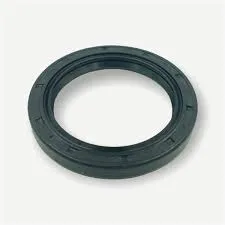12 月 . 03, 2024 18:22 Back to list
12x22x7 oil seal
Understanding the 12x22x7 Oil Seal Essentials for Machinery Maintenance
In the world of machinery and engineering, oil seals play a critical role in ensuring the effective functioning of equipment. Among the various types of oil seals available, the 12x22x7 oil seal stands out due to its specific dimensions and applications. This article will delve into the characteristics, applications, and importance of this particular oil seal, providing a comprehensive understanding for engineers and maintenance professionals.
What is an Oil Seal?
An oil seal, sometimes referred to as a shaft seal, is a type of sealing device that is utilized to prevent leakage of lubricants from machinery and to keep contaminants such as dirt and water from entering the system. These seals are commonly made from materials like rubber, polyurethane, or silicone, which provide flexibility, durability, and resistance to various environmental factors.
Specifications of 12x22x7 Oil Seal
The specification 12x22x7 refers to the dimensions of the oil seal - 12 mm is the inner diameter (ID), - 22 mm is the outer diameter (OD), and - 7 mm is the width.
These dimensions make the 12x22x7 oil seal suitable for numerous applications where space constraints and the need for durability are of paramount importance.
Types of Materials
The materials used in the construction of oil seals are critical to their performance. For the 12x22x7 oil seal, common materials include - Nitrile Rubber (NBR) Known for its excellent resistance to petroleum-based oils, NBR is the most widely used material for oil seals. It operates effectively in a temperature range of -40°C to +100°C. - Fluoroelastomer (FKM) For applications requiring resistance to extreme temperatures and aggressive chemicals, FKM is an excellent choice. It can withstand temperatures up to 200°C but is generally more expensive than NBR. - Polyurethane This material offers good abrasion resistance and can be used in applications where high wear is expected.
Each material has its own set of advantages, and the choice of material significantly impacts the seal's performance and longevity.
12x22x7 oil seal

Applications
The 12x22x7 oil seal is used across a diverse range of applications, including but not limited to
1. Automotive Industry Oil seals are critical components in engines, transmissions, and differentials, where they prevent the leakage of lubricants and protect against dirt and moisture ingress. 2. Industrial Machinery Machines such as pumps, compressors, and gearboxes rely on oil seals to maintain lubrication and ensure smooth operation.
3. Household Appliances From washing machines to vacuum cleaners, many appliances utilize oil seals to ensure efficient performance and to extend the life of motors and bearings.
4. Agricultural Equipment Tractors and other agricultural machinery benefit from the reliable sealing provided by oil seals, helping to maintain uptime in demanding environments.
Importance of Proper Installation
Proper installation of oil seals is crucial for their effective performance. Incorrect installation can lead to premature failure, leaks, and contamination of lubricants. Key installation tips include - Ensuring the sealing surfaces are clean and smooth. - Using the correct tools to avoid damaging the seal during installation. - Lubricating the seal before fitting to reduce friction and facilitate a snug fit.
Conclusion
The 12x22x7 oil seal may seem like a small component in the grand scheme of machinery, but its role is invaluable in maintaining the efficiency and safety of various systems. Understanding the specifications, material options, and applications of oil seals is essential for engineers and maintenance teams. With proper selection and installation, these seals can significantly enhance the performance and longevity of machines, ultimately leading to cost savings and improved operational efficiency.
Investing time and resources in understanding components like the 12x22x7 oil seal is a wise decision for anyone involved in machinery maintenance, as it reflects a commitment to quality and reliability in engineering practices.